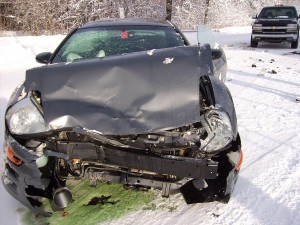Disparities in fatality rates between men and women fell significantly starting with model year 2000 vehicles, according to findings outlined in a report released last month by the National Highway Traffic Safety Administration.
The report, “Female Crash Fatality Risk Relative to Males for Similar Physical Impacts,” updates a 2013 NHTSA study examining female fatality risk relative to male fatality risk in crashes with similar physical impacts.
“While NHTSA’s new report shows significant declines in differences in crash outcomes between women and men, there is more work required to eliminate any disparities that remain,” said Dr. Steven Cliff, NHTSA’s Administrator.
 According to the report, the estimated difference in female fatality risk compared to male fatality risk is significantly reduced in newer vehicles, starting as early as model year 2000. The newer the vehicle, the smaller the disparity. The overall gap drops from 18 percent to 6.3 percent for 2010-2020 vehicles and to 2.9 percent for 2015-20 vehicles.
According to the report, the estimated difference in female fatality risk compared to male fatality risk is significantly reduced in newer vehicles, starting as early as model year 2000. The newer the vehicle, the smaller the disparity. The overall gap drops from 18 percent to 6.3 percent for 2010-2020 vehicles and to 2.9 percent for 2015-20 vehicles.
The declines correlate with the highway safety agency’s adoption of the Federal Motor Vehicle Safety Standards for seat belts and airbags and its educational campaigns to improve seat belt use.
The study found, for example, that fewer than a third of occupants wore seat belts in the crashes included in the study involving model year 1960-2009 vehicles. For later year vehicles – model years 2010-2020 – almost 83 percent of occupants wore seat belts.
Some additional key findings of the study include:
- The estimated difference in fatality risk estimates for female versus male front row occupants was approximately 6.3 percent for model year 2010-2020 vehicles, significantly reduced from the estimated 18.3 percent for model year 1960-2009 vehicles. The estimated difference is further reduced to about 2.9 percent for the latest model year vehicles (2015-2020).
- Newer generations of cars equipped with dual airbags reduce the estimated fatality risk for women compared to men.
- When passenger and drivers use the most advanced seat belts, also found in newer vehicles, the estimated fatality risk for women relative to men drops to about 6.1 percent.
The auto safety agency is taking several steps to ensure that any existing disparities in like crash outcomes for men and women are eliminated. These include the development of new biofidelic crash test dummies, the development of sophisticated computer modeling that can evaluate the effects of different types of crashes on a large range of human body types and sizes, research into the degree to which sex disparities in injuries exist in like crashes, and the evaluation of new safety standards to eliminate all remaining disparities.
Credit: NHTSA
Was this article valuable?
Here are more articles you may enjoy.

 J&J Talc Jury Awards $1.56 Billion to Asbestos Cancer Victim
J&J Talc Jury Awards $1.56 Billion to Asbestos Cancer Victim  Poorer Americans Dropped Federal Flood Insurance When Rates Rose
Poorer Americans Dropped Federal Flood Insurance When Rates Rose  Texas Camp’s Reopening Draws Outrage, but Some Families Want to Return
Texas Camp’s Reopening Draws Outrage, but Some Families Want to Return  Wells Fargo Sued by Ex-Manager Who Said Bank Faked Diversity
Wells Fargo Sued by Ex-Manager Who Said Bank Faked Diversity 